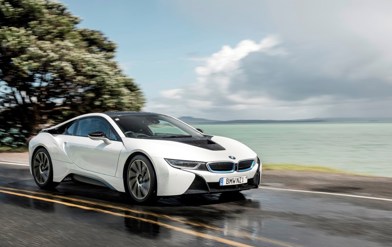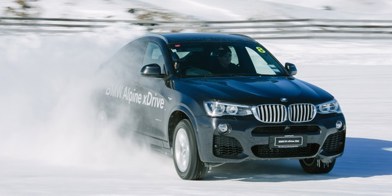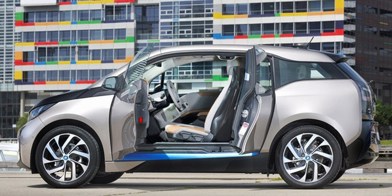It's such a chore to start stories like these with big, complicated number dumps. But for a machine like the new Audi RS6 Avant — less a car and more a world motoring event — it seems like an apt place to start.
Thrust is sourced from a 441kW/800Nm 4.0-litre twin-turbo V8, and dispatched with haste to all four wheels. Hold your foot down for 3.6 seconds and you'll have hit 100km/h. In another 8-odd seconds the needle will pass 200km/h. Commit a little longer, and you'll reach the limited 250km/h top speed.
And, if you select a few options, that top speed can grow to 305km/h.
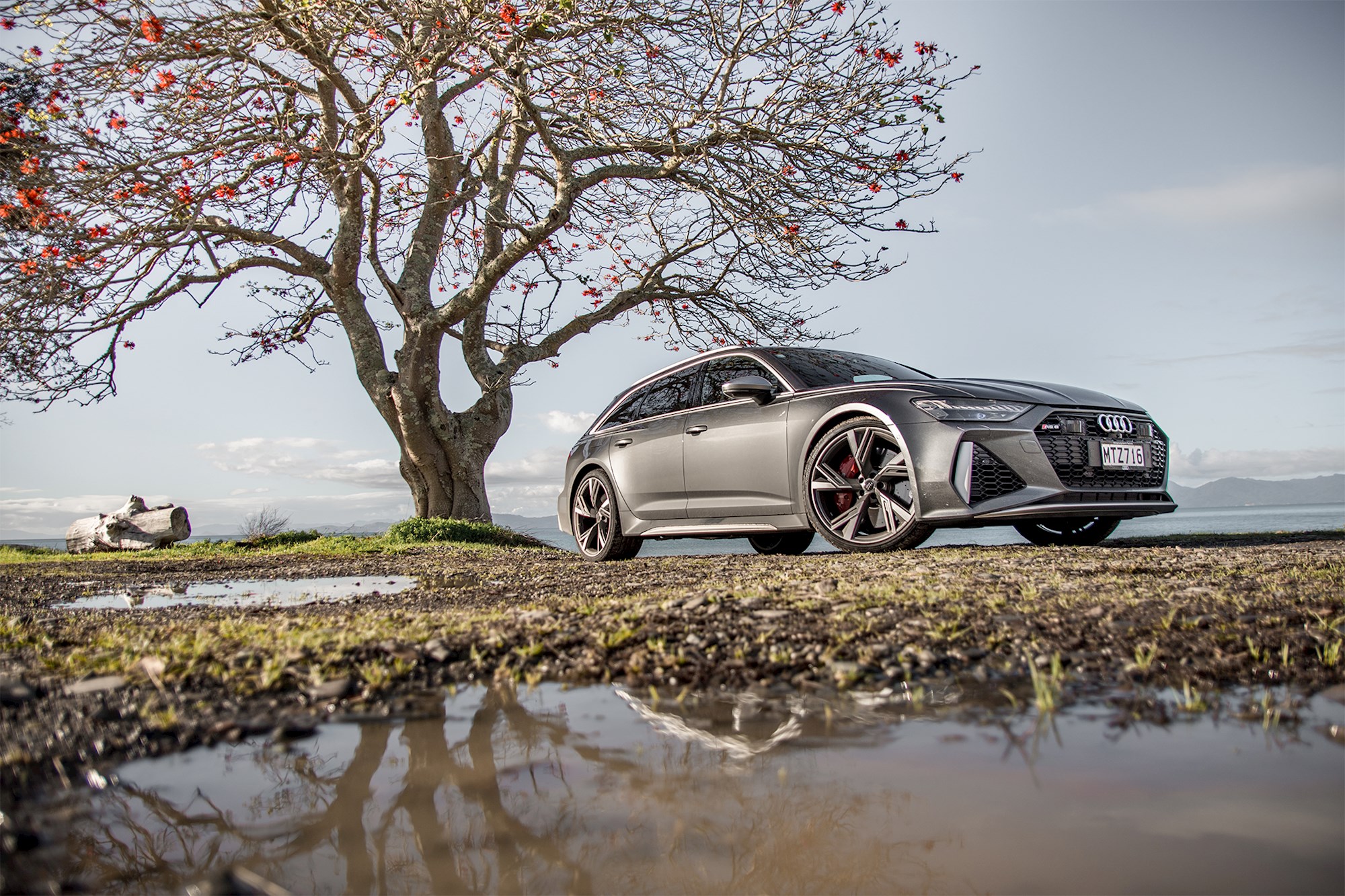
That's an ample amount for a supercar, and borderline otherworldly in a two-ton warhead that looks just as at home in front of Countdown as it does Hampton Downs.
This is more than just another fast wagon. The new RS6 has become something of an unwritten global relaunch of Audi's performance wing. The model is to debut America for the first time to the drooling jubilation of wagon fans (and SUV deniers) all over the continent. Those in line for one here are paying a pretty penny. Pricing starts at $219,900, and can easily nudge a quarter of a million bucks if certain performance options get ticked.
Interested in adding ceramic brakes? That'll be $24,000, please.
With no Mercedes-AMG E63 estate offered in New Zealand (for the time being), the BMW M5 and E63 sedans are left as the RS6's core rivals. Refreshed versions of both have been unveiled over the last week. Pricing hasn't been confirmed, but expect them to undercut the RS6 by a nose.
The Porsche Panamera Sport Turismo is maybe the RS6's lone large performance wagon rival, but it's in its own little stratosphere. They start at a rather close $225,400 for the Panamera 4, but that only comes with a twin-turbo V6. The Turbo Sport is closest on-paper performer, but costs a staggering $359,300.
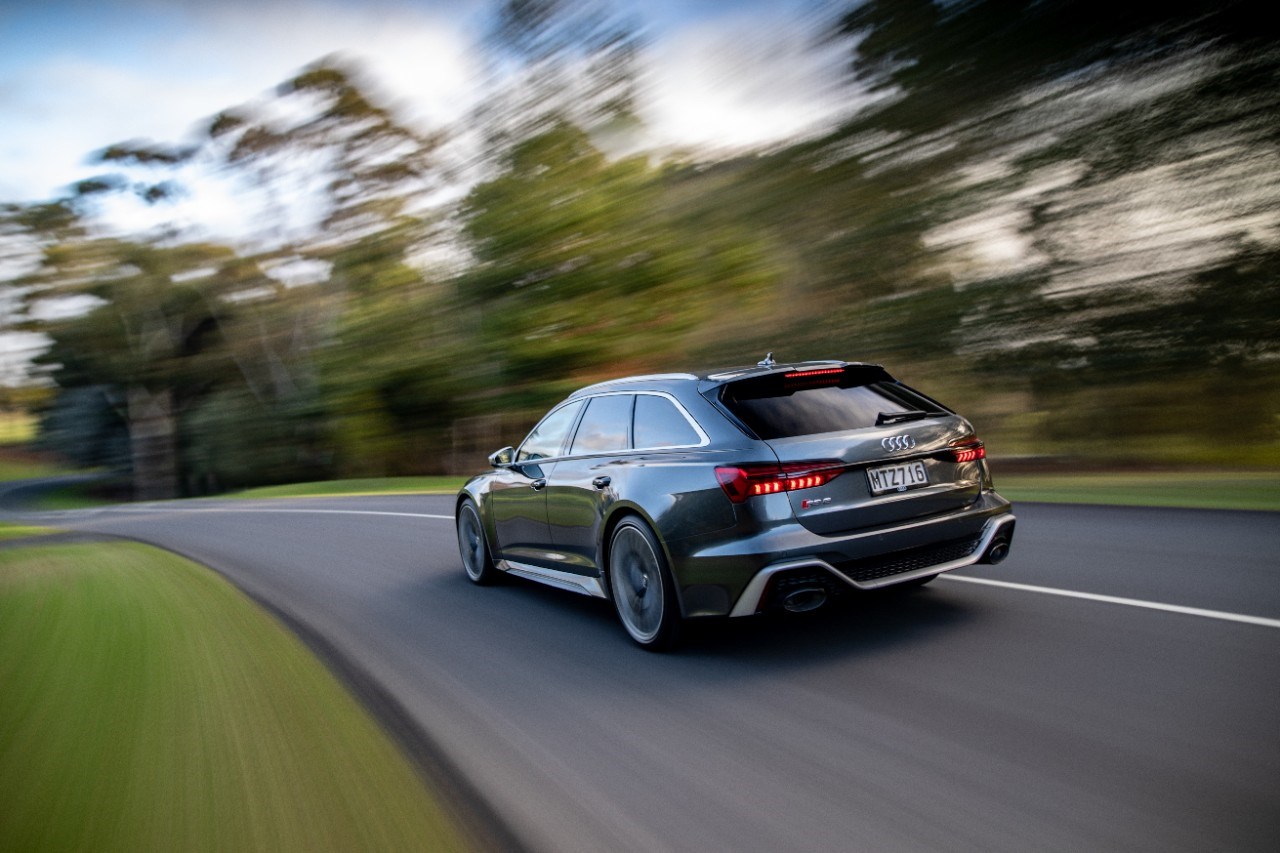
The 'R' in RS6 may as well stand for reinvention, as almost nothing from the standard sedate A6 Avant's body carries over — just the roof, front doors, and tailgate. The interior continues Audi's excellent run of cabin form, with exceptional fit and finish, an impressive array of materials, and layers of neat technology.
The dashboard's dual haptic feedback screens form the headline act; the 10.1-incher on top acting as a primary for your B&O audio, phone connectivity, satnav, 360-degree camera, and more, while the 8.6-inch screen underneath houses most of the car's air conditioning settings. Combined with Audi's Virtual Cockpit binnacle and heads-up displays, you have a car that envelopes the driver with more info, more efficiently than anything else in class.
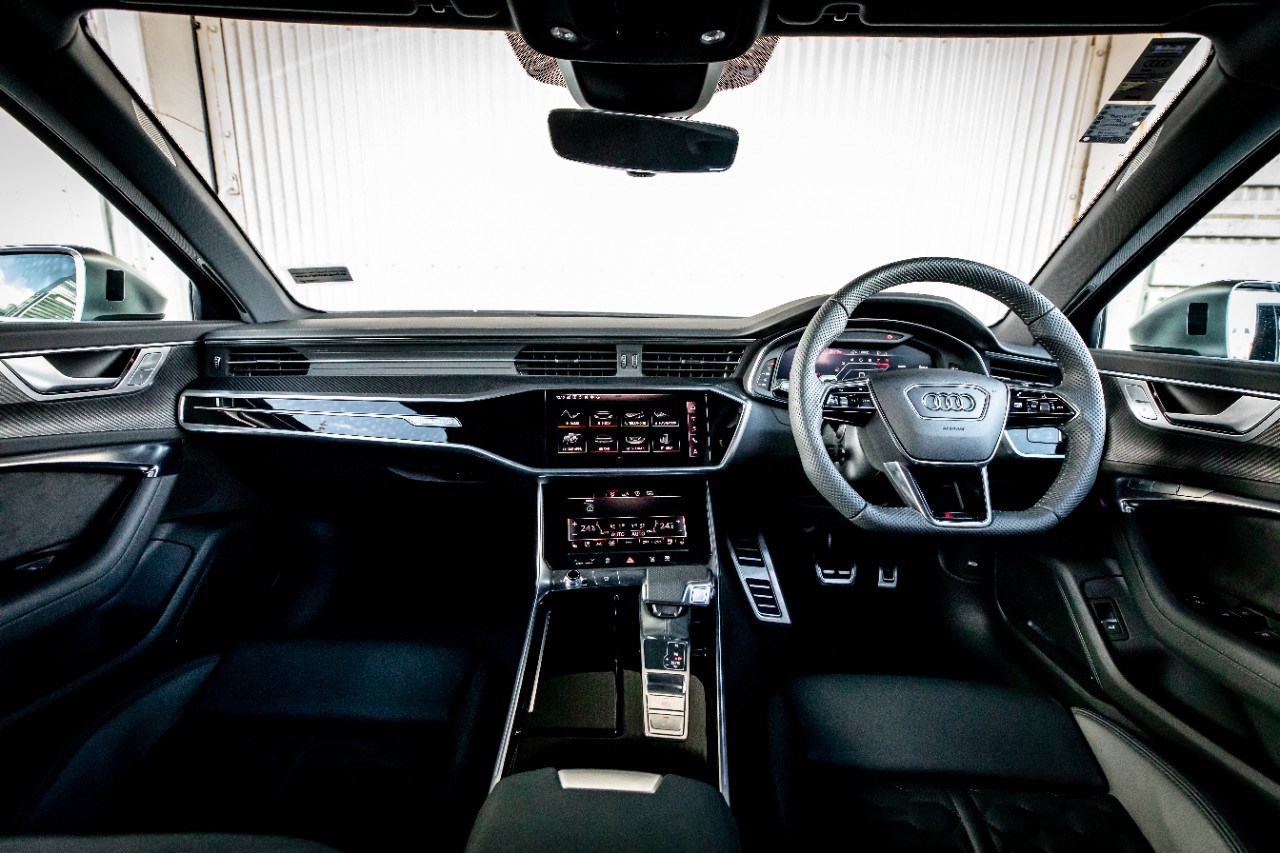
Crammed with machismo it may be, but the RS6 is also quiet. Road roar from the gargantuan 285/30 Hankooks is barely legible, thanks in part to measures like double-glazed windows. And in the subdued modes, the engine barely makes a peep. Boot space is 565 litres with the seats up and 1680 litres with the seats down; a touch more than an Audi Q5.
Power and torque is up by 29kW and 100Nm respectively over the outgoing model (although, still a few less horses than the old RS6 Performance), and Audi has deployed all manner of trickery to help owners tame those under-bonnet gains, including its new optional Audi Sport rear differential and the presence of a 48V hybrid system.
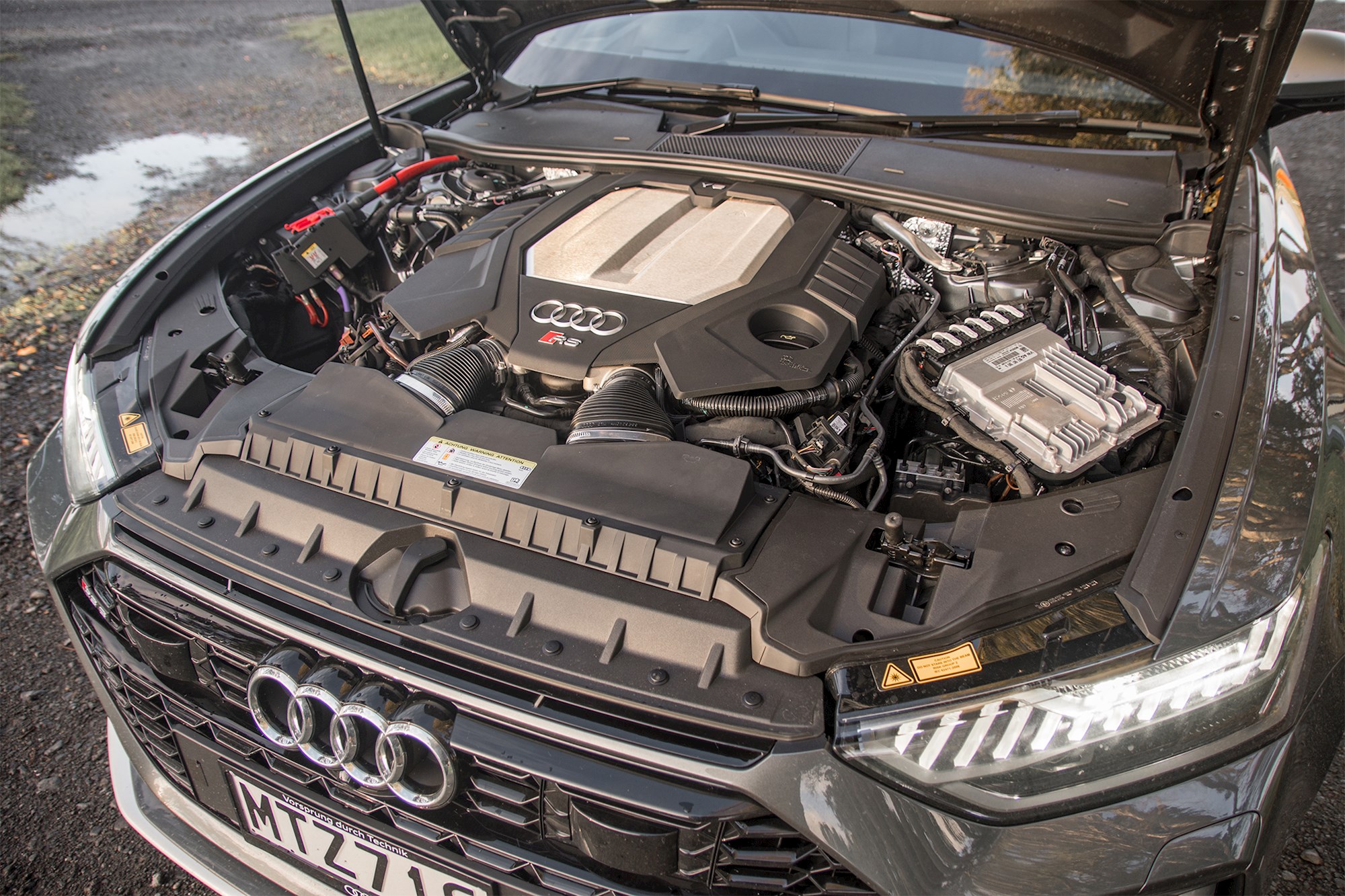
Depending on your persuasion on electrification, it'll either be cause for celebration or crushing disappointment to learn that the battery doesn't give the powertrain any extra punch. Nor can the car run on pure electricity.
Rather, the mild hybrid system is there to help the wagon skim fuel off the top via a 'coasting' mode. This dovetails with Audi's cylinder deactivation tech that can shut off half of the wagon's eight cylinders during low-stress driving.
After all that, claimed economy is 11.7L/100km. In other words, nothing to notable.
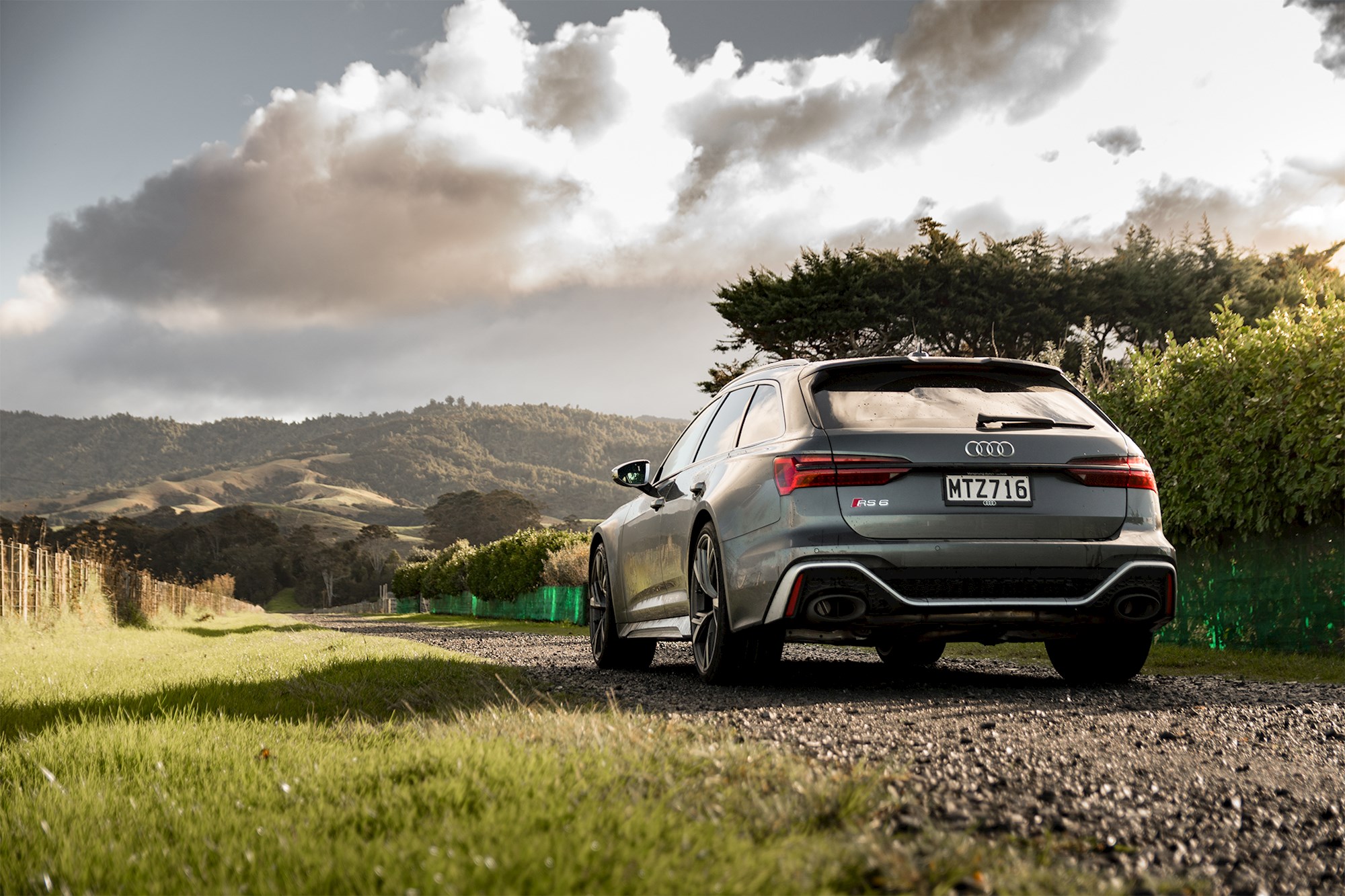
The differential, meanwhile, follows a similar ethos to the Mercedes-AMG Torque Control system we skidded around with in the new A45 S. It's capable of sending an impressive 85 per cent of power to the rear wheels if it sees fit and, combined with optional 'Dynamic' four-wheel steering, it makes for a wagon that should be able to shake itself clean of some of the one-dimensional handling characteristics past RS models once faced.
For our test, there was a catch. Our RS6 presser was uncharacteristically thin on options. Apart from the (admittedly spectacular) 22-inch optional wheels, it landed in the collective DRIVEN driveway with no options ticked. So, no Dynamic Steering, no tweaked speed limiter, and — sadly — no trick differential.
Just for reference, if you optioned out all these performance additives, you'd wind up with a car priced at (I hope you're sitting down for this) $254,000. Crikey.
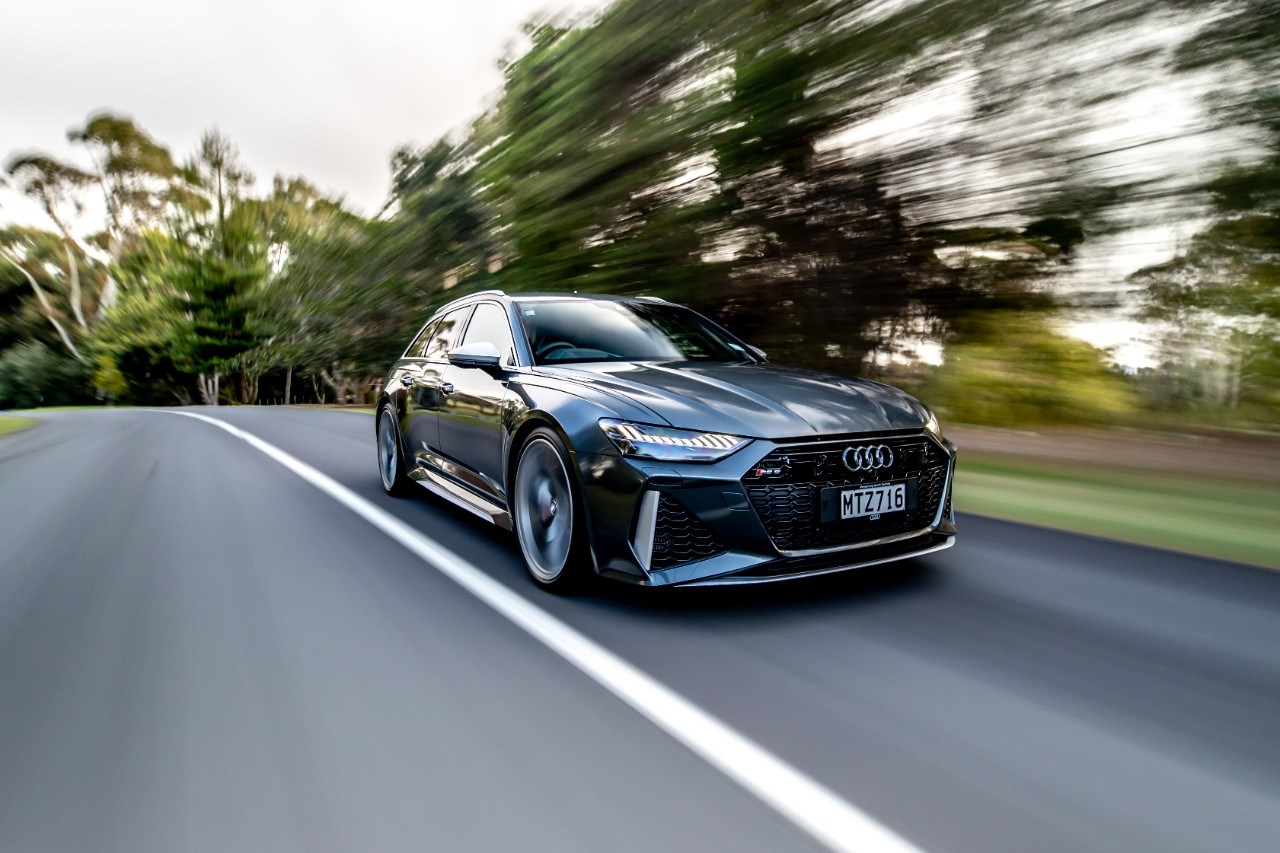
While the lack of the sports diff and four-wheel steering in particular cast a bit of mystery onto the RS6's true cornering capabilities, there's still plenty one can glean from a day of bombing through the picturesque roads connecting Flat Bush, Clevedon, and Kaiaua.
It's hugely cliché, but the RS6 is a true sledgehammer of a car. It's sophisticated underneath, but produces an experience that's accessible to just about anyone who hops behind the wheel. It bellows a memorable V8 sing song and flashes lots of red LEDs in your face, but there's little in the way of actual variable drama.
Few cars are so simple and matter of fact about the act of delivering stupendous mountains of speed ... any time, any place.
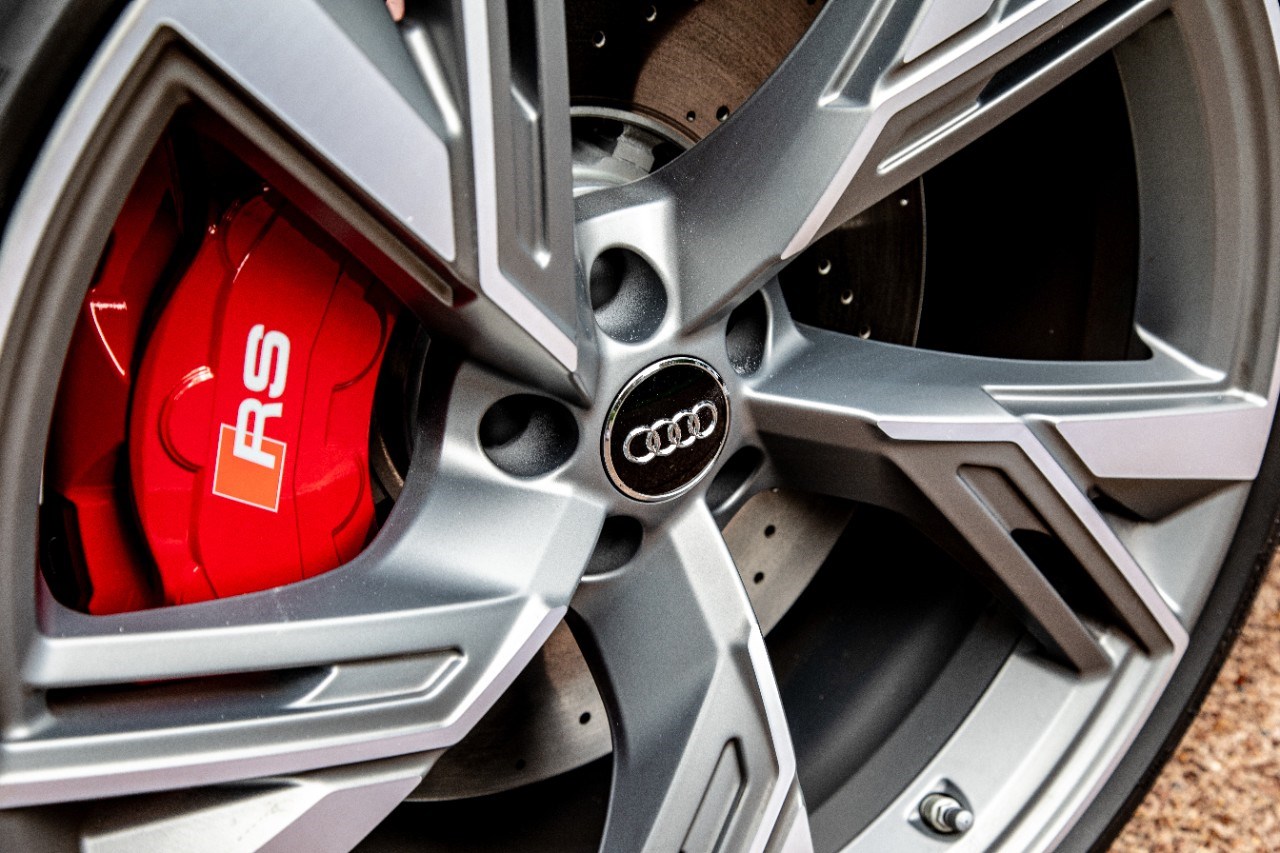
The difference is that it's a more effective blunt device than its forefathers. Improvements spawned by its sophistication mean that cheeky snide comments about heavy noses and understeer need to at least be re-evaluated with the RS6.
The once complicated desire to bury your right foot on corner exit only to face thick waves of front-end push has been more or less eliminated. The eight-speed tiptronic is a handy partner in crime in these times, behaving like a well sorted dual clutch at the limit.
The RS6 allows you to be much more brazen without worrying so much about consequences, other than where the decimal point lands on the speeding ticket.
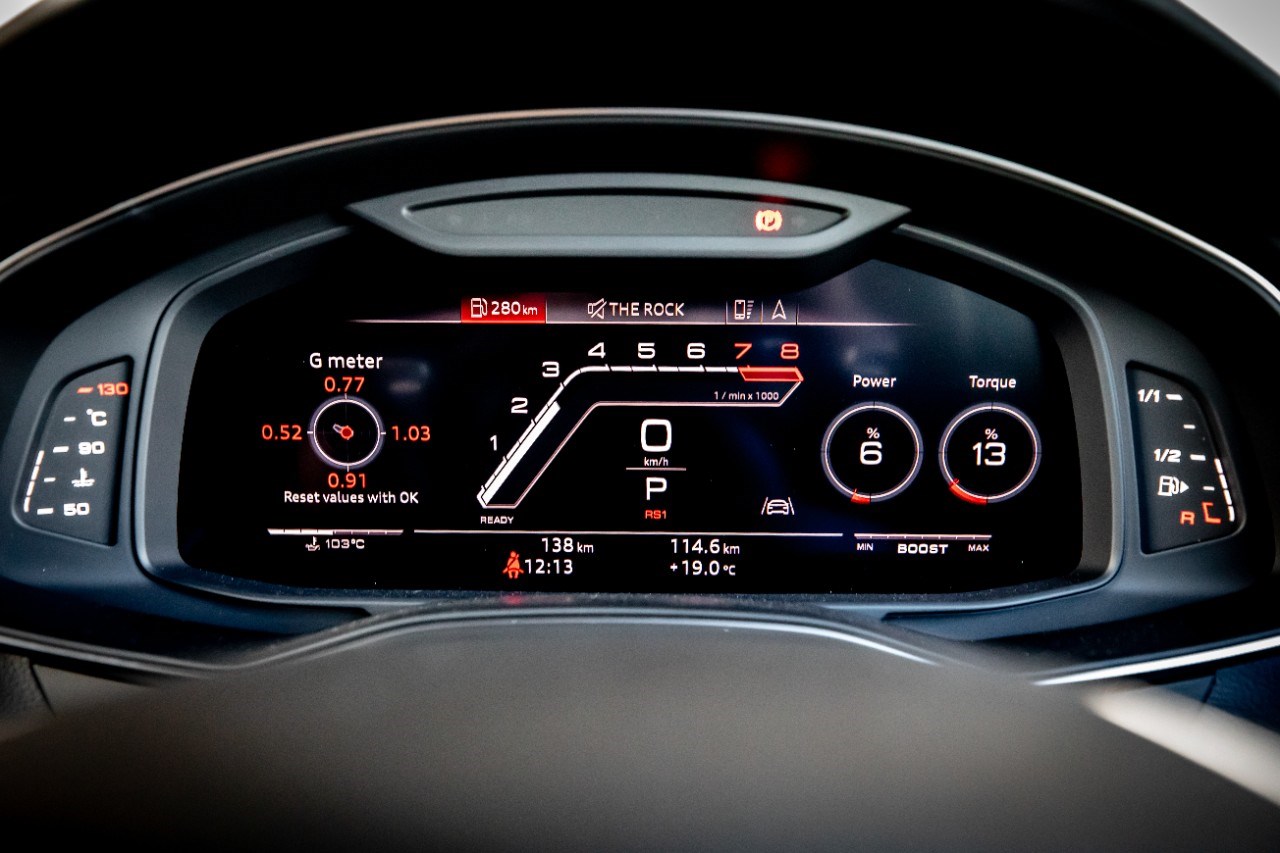
Not to say that the RS6 has strayed too far from its roots, however. That tendency to understeer in times of crisis is still there, only now it's much easier to just feather the throttle to get more turn as required.
The M5 and E63 may be all-wheel drive these days, but they both still by-and-large feel rear-driven most of the time. And similarly, work may have been done to send more of the big Audi's torque and power rearwards but the fact is that it still feels like something with a neutral to front-end bias.
Those who do doughnuts in supermarket parking lots at 2.30am to pass the time probably have a lot to say about how wrong that is. But, there's key benefits.
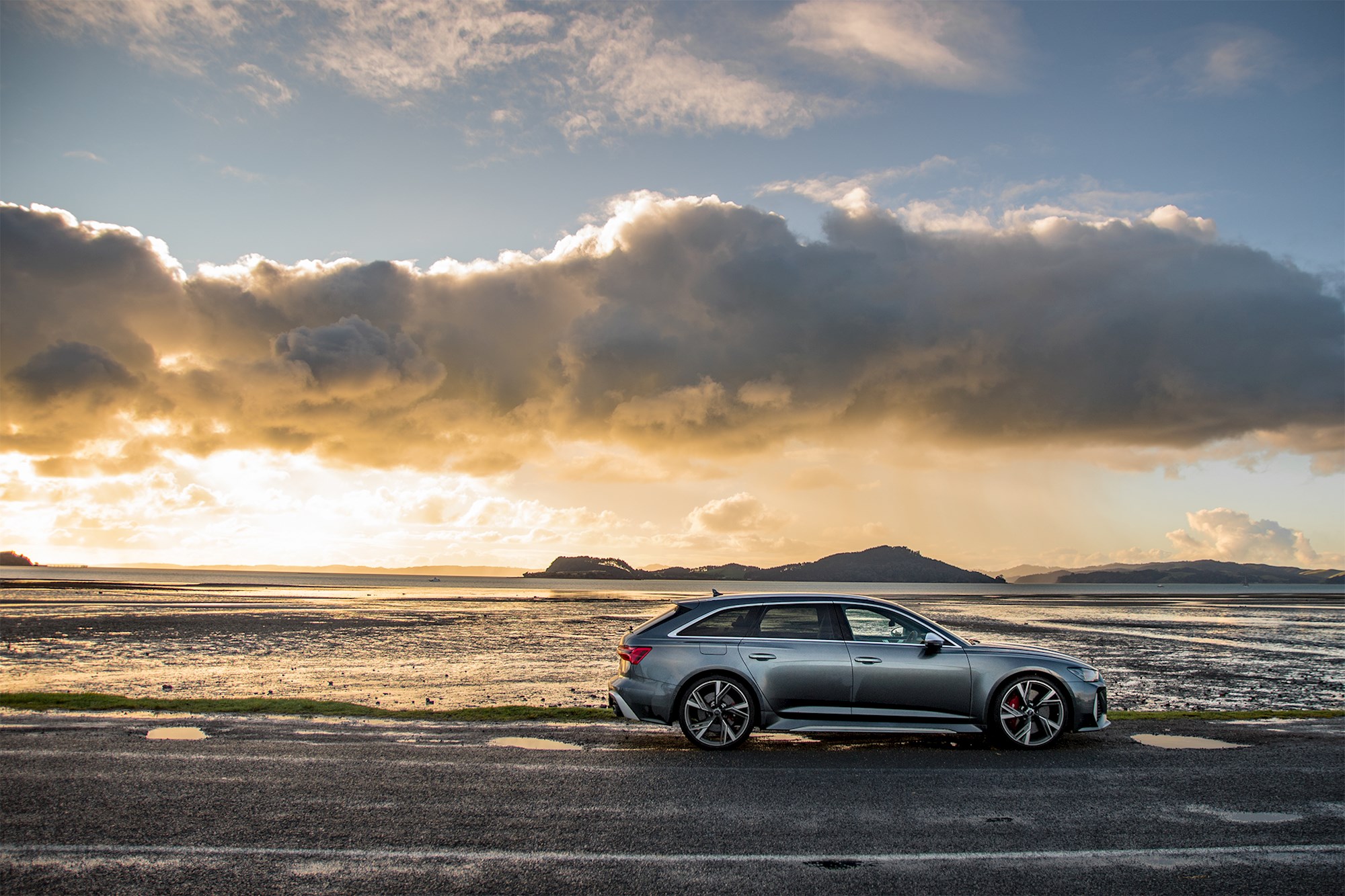
The resulting RS6 feels more planted and infallible, and therefore is arguably the most grown up of the trio to own as a daily driver. The only stumble in this regard is the ride, which a bit harsh on those intricate 22s. The transformation from relatively fine in Comfort mode to borderline irritating in Dynamic mode is huge, and largely solvable via the car's configurable RS1 and RS2 modes.
You have to hand it to Audi. They've remained true to RS, Quattro, and all of their legacies with the RS6 Avant. It may not be as raw or finessed as its rivals, but in a roundabout way that's what makes the RS6 stand out most.
It's a car capable of doing truly everything, and a watershed achievement for Audi.




























